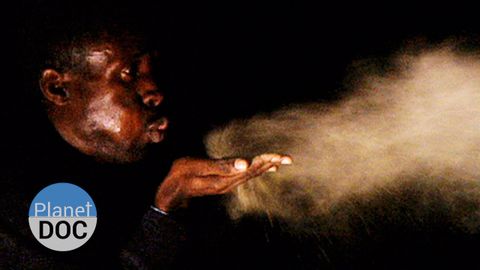ブードゥー教の神秘|フル・ドキュメンタリー - Planet Doc Full Documentaries (Voodoo Mysteries | Full Documentary - Planet Doc Full Documentaries)
劉家豪 が 2021 年 01 月 14 日 に投稿  この条件に一致する単語はありません
この条件に一致する単語はありません- n. (c./u.)(同じ文化を共有する)民族;人々;人々;親族;社員
- v.t.居住する
- n. pl.人々
US /ˌpɑpjəˈleʃən/
・
UK /ˌpɒpjuˈleɪʃn/
US /ˈsækrəˌfaɪs/
・
UK /'sækrɪfaɪs/
- n.生贄;生贄;生贄;犠牲
- v.t.犠牲にする;生贄;捧げ物をする
- n. (c./u.)犠牲
US /ˈspɪrɪt/
・
UK /'spɪrɪt/
- n.決心 : 心的態度;精神;宗教的;魂
- v.t.神隠しのように連れ去る
エネルギーを使用
すべての単語を解除
発音・解説・フィルター機能を解除

